Messier Objects
On the left is my picture. On the right is a more ideal image by a professional astronomer.My pictures still require more post-processing.
Messier object descriptions and images are usually stolen from SEDS
M1 - Crab Nebula
M1, The Crab Nebula, (Messier 1, NGC 1952), is the most famous and conspicuous known supernova remnant, the expanding cloud of gas created in the explosion of a star as supernova which was observed in the year 1054 AD. It shines as a nebula of magnitude 8.4 near the southern "horn" of Taurus, the Bull.
medium original
27 Oct 2007
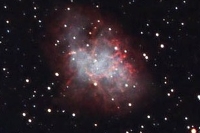
Bobby Middleton
M2
M2 has a diameter of about 175 light-years, contains about 150,000 stars, and is one of the richer and more compact globular clusters, of notable ellipticity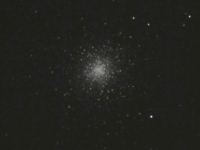
medium original
27 Oct 2007
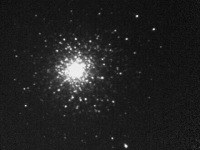
Martin Germano
M7
M7 is an open star cluster in the constellation Scorpius, set against the dramatic backdrop of the Milky Way.
medium original
27 Oct 2007

N.A.Sharp, REU program/AURA/NOAO/NSF
M8 - Lagoon Nebula
The Lagoon Nebula Messier 8 (M8, NGC 6523) is one of the finest and brightest star-forming regions in the sky. It is a giant cloud of interstellar matter which is currently undergoing vivid star formation, and has already formed a considerable cluster of young stars.
medium
27 Oct 2007
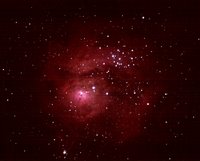
Adam Block of the Advanced Observing Program
M9
M9, a globular cluster in the constellation Ophiuchus, is one of the smaller and less brilliant, but also one of the more concentrated globulars, and one of those rather close to the Galactic center.
medium original
27 Oct 2007
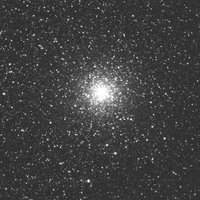
Bill Keel of the University of Alabama
M11
The Wild Duck Cluster, (also known as Messier 11, or NGC 6705) is an open cluster in the constellation Scutum. The Wild Duck Cluster is one of the richest and most compact of the known open clusters, containing about 2900 stars. Its age has been estimated to about 220 million years. Its name derives from the brighter stars forming a triangle which could represent a flying flock of ducks.
medium original
27 Oct 2007
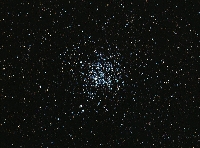
www.darkskyimages.com
M15
M15, (also known as Messier 15 or NGC 7078) is among the more conspicuous of these great stellar swarms. At a distance of about 33,600 light years, its diameter of 18.0 arc min corresponds to a linear extension of about 175 light-years, and its total visual brightness of 6.2 magnitudes corresponds to an absolute magnitude of -9.17, or roughly 360,000 times that of our sun. The globular cluster is approaching us at 107 km/sec. My image was not initially recorded as M15 but i later identified it using Deep Sky Browser. It matches Tom's picture (on right) perfectly.
medium original
27 Oct 2007
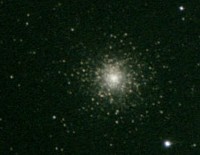
http://tomsastroblog.com
M20 - Trifid Nebula
The Trifid Nebula Messier 20 (M20, NGC 6514) in Sagittarius is a remarkable and beautiful object as it consists of both a conspicuous emission nebula and a remarkable reflection nebula component.
medium original
27 Oct 2007
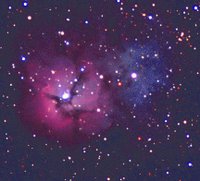
Greg Bothun
M22
Globular cluster M22 in Sagittarius, the brightest globular cluster visible from the northern hemisphere, is a conspicuous naked eye object.
medium original
27 Oct 2007
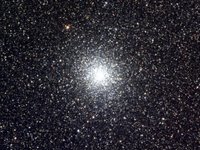
N.A.Sharp, REU program/AURA/NOAO/NSF
M23
Irregularly-shaped open star cluster M23 is a bright, large, rich, and rather attractive cluster in the crowded Milky Way region of Sagittarius.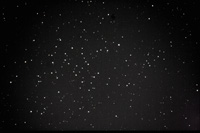
medium original
27 Oct 2007
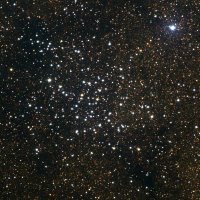
N.A.Sharp, REU program/AURA/NOAO/NSF
M27
The Dumbbell Nebula Messier 27 (M27, NGC 6626) is perhaps the finest planetary nebula in the sky, and was the first planetary nebula ever discovered.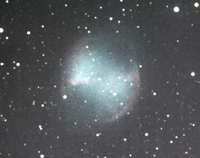
medium original
8 Sep 2007
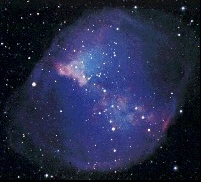
NOAO/AURA/NSF
M28
Globular cluster Messier 28 (M28, NGC 6626) is another conspicuous globular cluster in the rich constellation Sagittarius.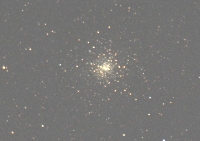
medium original
27 Oct 2007
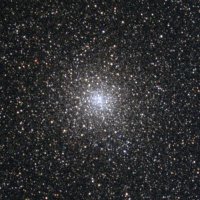
NOAO/AURA/NSF
M42 - Orion Nebula
The Orion Nebula Messier 42 (M42, NGC 1976) is the brightest starforming, and the brightest diffuse nebula in the sky, and also one of the brightest deepsky objects at all. Shining with the brightness of a star of 4th magnitude, it visible to the naked eye under moderately good conditions. It is also a big object in the sky, extending to over 1 degree in diameter, thus covering more than four times the area of the Full Moon.
another M42 medium original
27 Oct 2007
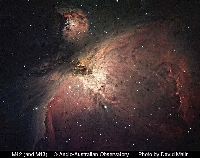
NOAO/AURA/NSF
M57 - Ring Nebula
The famous ring nebula Messier 57 (M57, NGC 6720) is often regarded as the prototype of a planetary nebula, and a showpiece in the northern hemisphere summer sky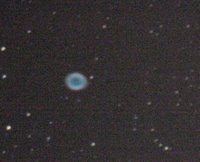
medium original
27 Oct 2007
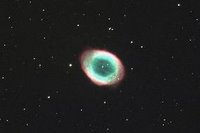
Daniel Folha and Simon Tulloch
M69
Globular cluster Messier 69 (M69, NGC 6637), similar to its neighbor M70, is one of the smaller and fainter globular clusters in Messier's catalog.The "bunny ears" in my medium picture shows misalignment of the stacking. Something to fix...
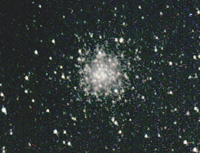
medium original
27 Oct 2007
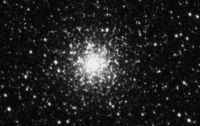
Deep Sky Browser
M74
Messier 74 (M74, NGC 628) is one of the nicest examples of so-called "grand-design" spiral galaxies seen face-on, so that its spiral structure stands out conspicuously. With its comparatively low surface brightness, it is one of the more difficult objects in Messier's catalog, situated in constellation Pisces.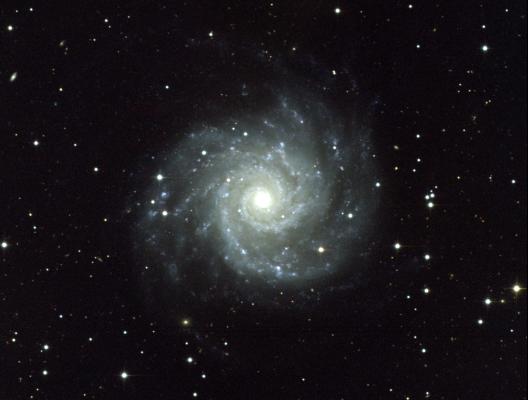
NOAO/AURA/NSF
M??
Take better notes next time. The next one is a messier objects but i didn't note down which ones at the time. It was early on when i was still experimenting. I took quite a few images stacked them but can't yet identify them. I tried to match them against SEDS but no luck so far. The second could be the wild duck nebula.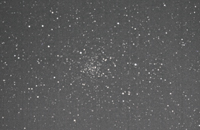
medium original TIFF
Back to www.myastronomy.info